
How to Use Solar Power Management Module: Examples, Pinouts, and Specs
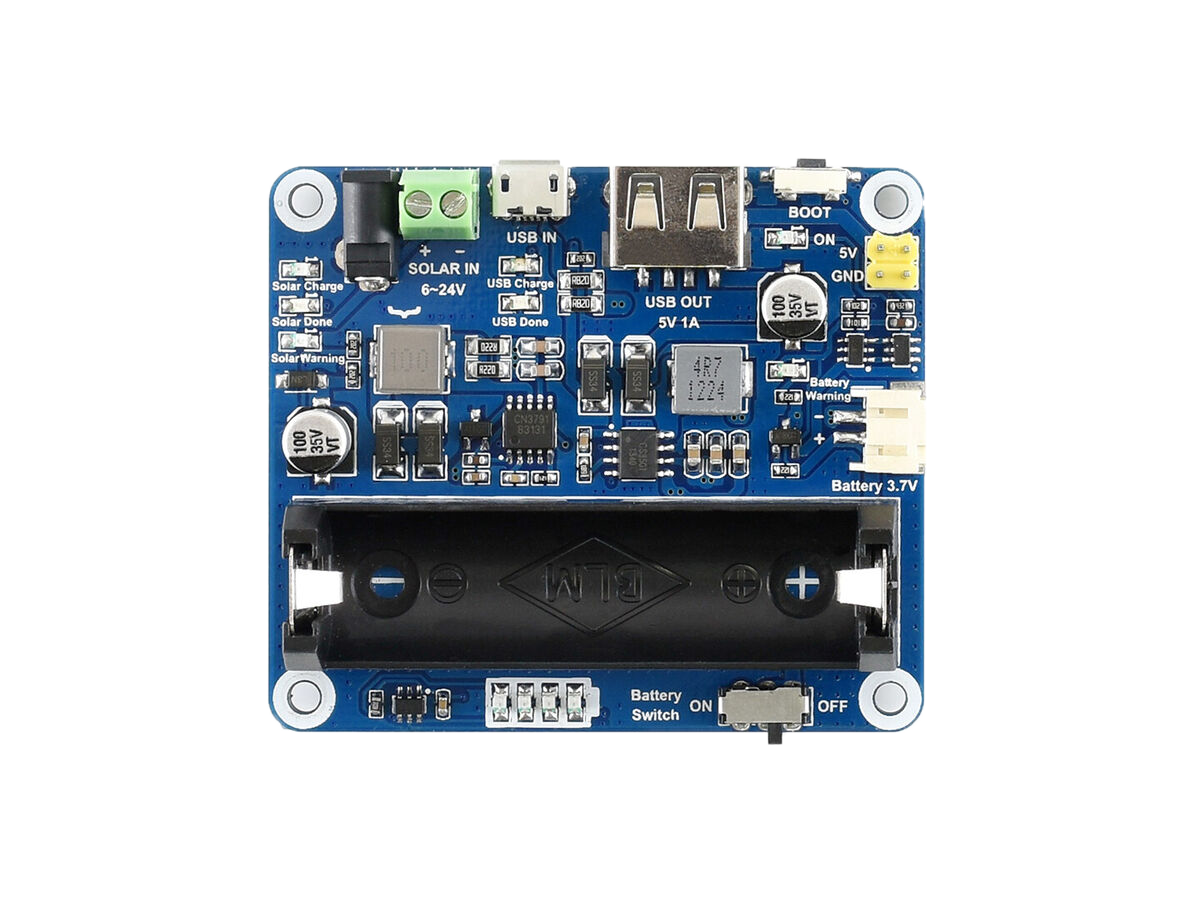
 Design with Solar Power Management Module in Cirkit Designer
Design with Solar Power Management Module in Cirkit DesignerIntroduction
The Solar Power Management Module is a device designed to regulate and optimize the power output from solar panels. It ensures efficient energy conversion, storage, and distribution to connected loads or batteries. This module is essential for solar-powered systems, as it protects batteries from overcharging, prevents energy loss, and maximizes the efficiency of solar energy utilization.
Explore Projects Built with Solar Power Management Module
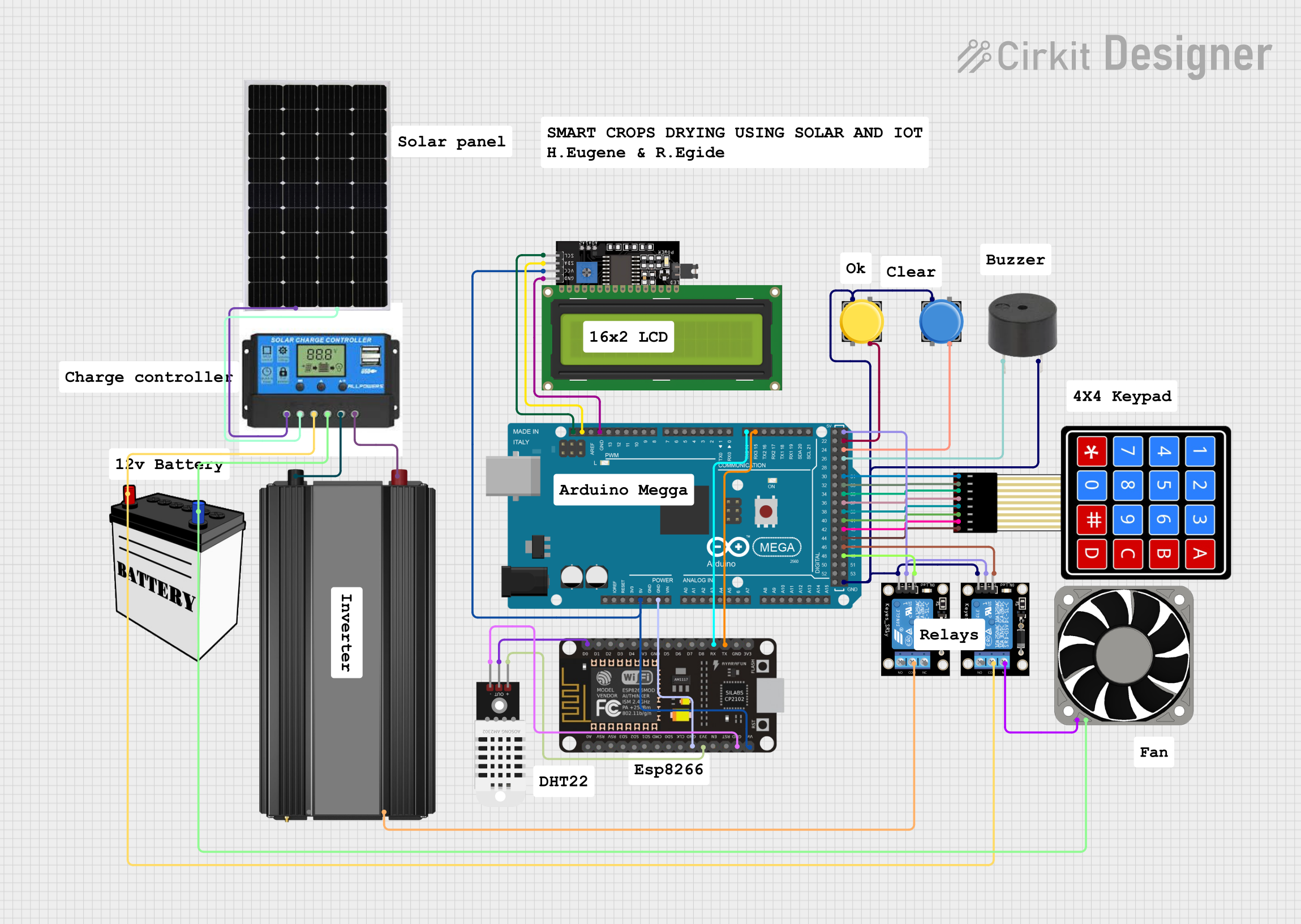
 Open Project in Cirkit Designer
Open Project in Cirkit Designer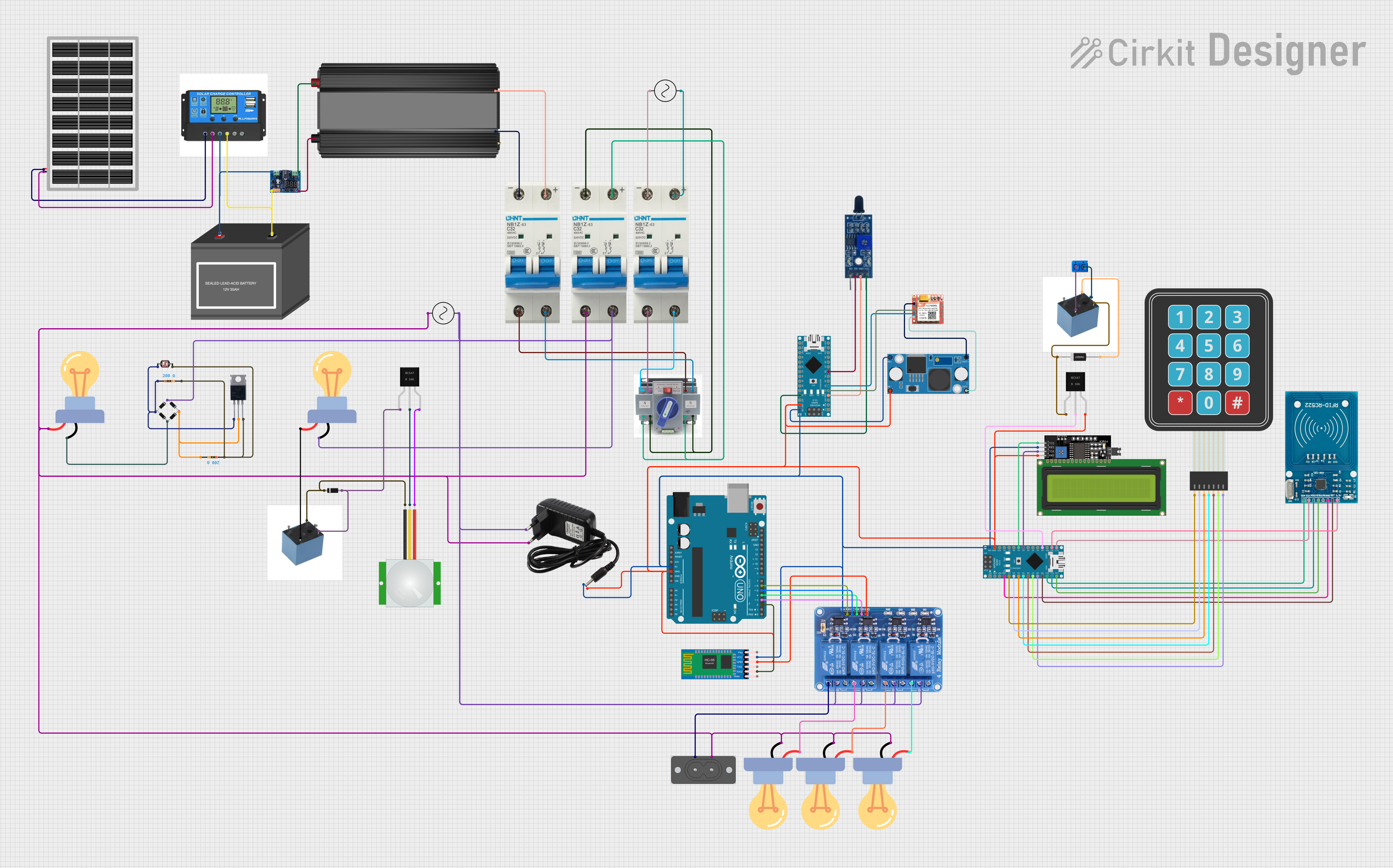
 Open Project in Cirkit Designer
Open Project in Cirkit Designer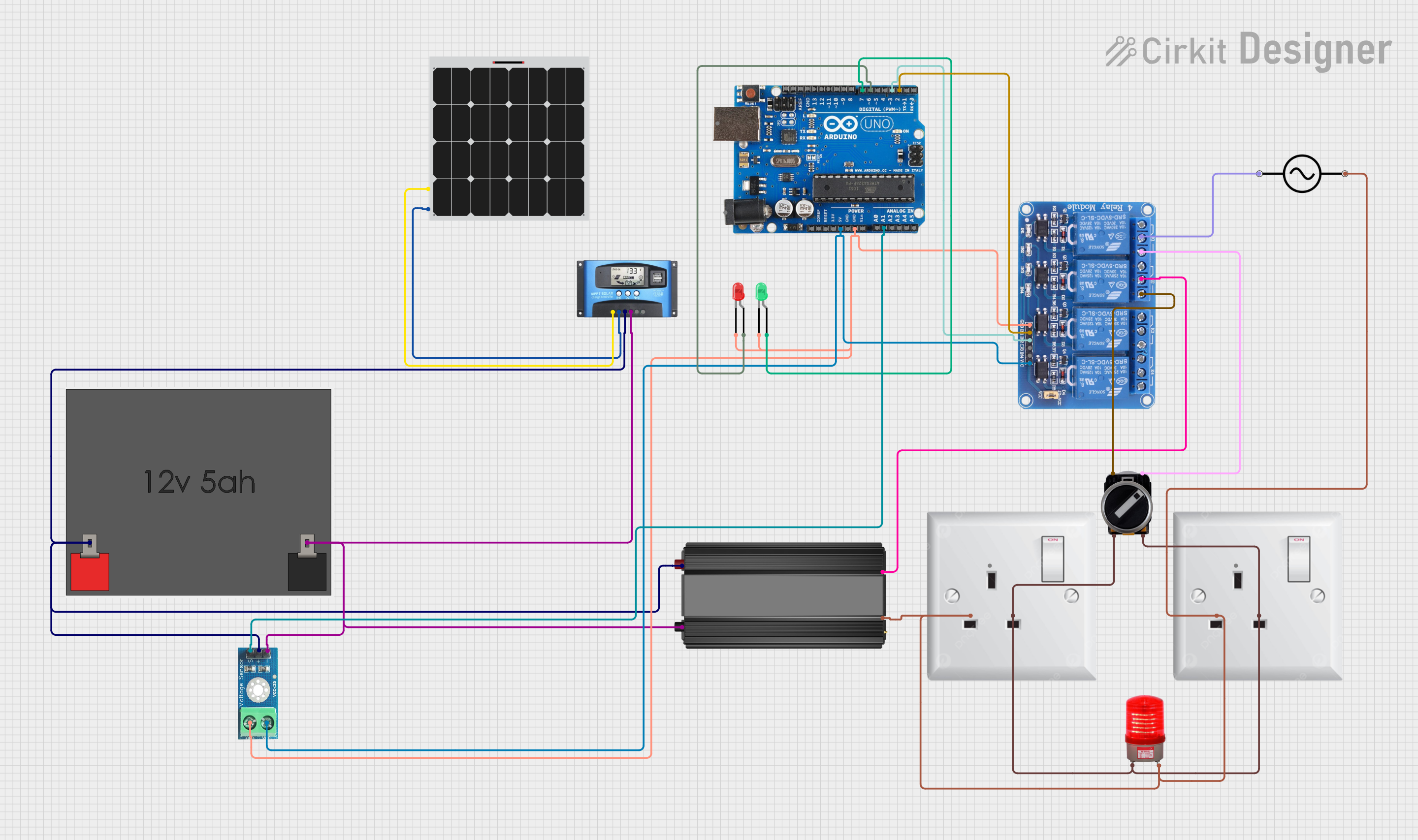
 Open Project in Cirkit Designer
Open Project in Cirkit Designer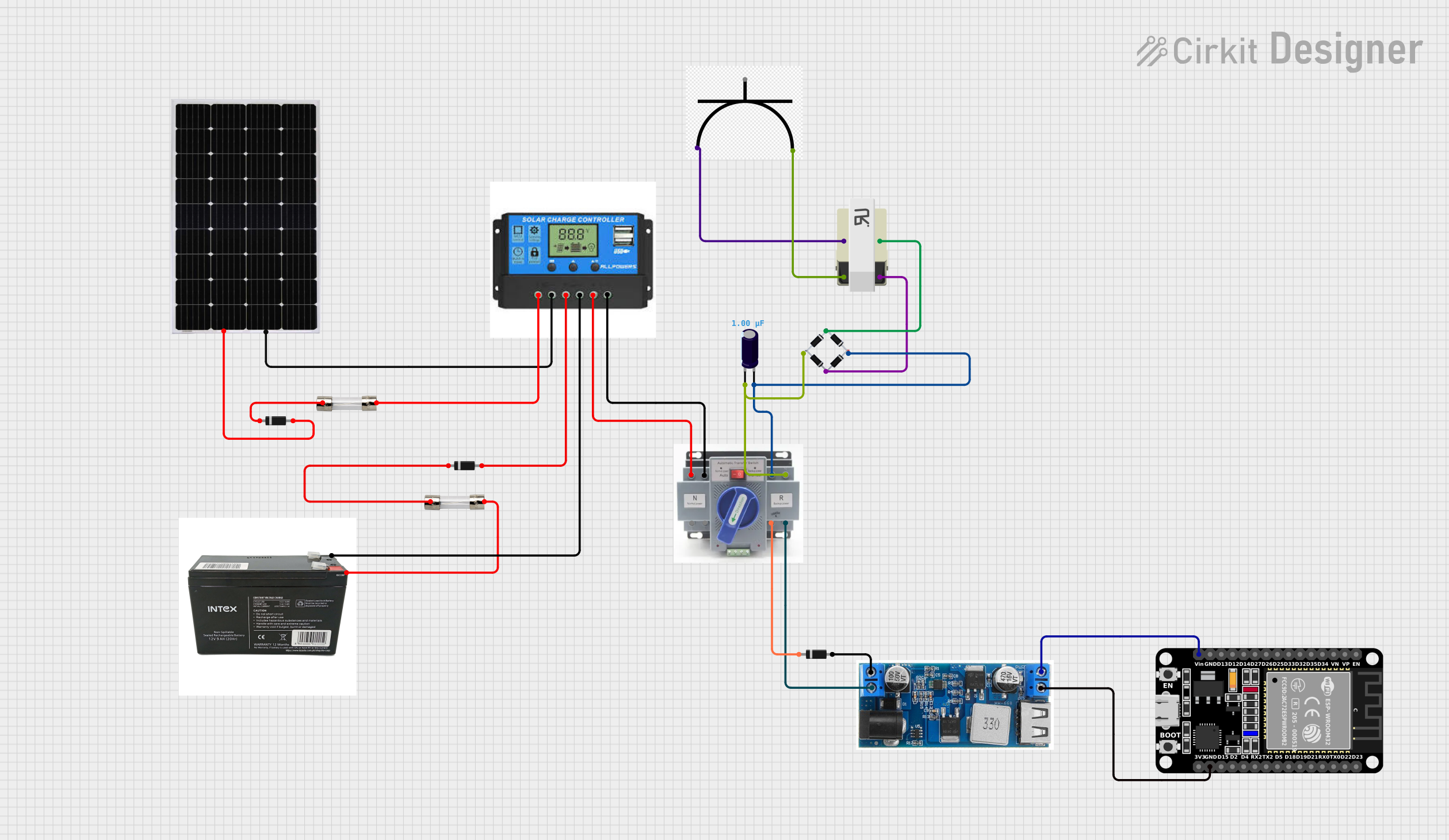
 Open Project in Cirkit Designer
Open Project in Cirkit DesignerExplore Projects Built with Solar Power Management Module

 Open Project in Cirkit Designer
Open Project in Cirkit Designer
 Open Project in Cirkit Designer
Open Project in Cirkit Designer
 Open Project in Cirkit Designer
Open Project in Cirkit Designer
 Open Project in Cirkit Designer
Open Project in Cirkit DesignerCommon Applications and Use Cases
- Solar-powered IoT devices
- Off-grid solar energy systems
- Portable solar chargers
- Solar lighting systems
- Renewable energy research and prototyping
Technical Specifications
Below are the key technical details of a typical Solar Power Management Module:
| Parameter | Value |
|---|---|
| Input Voltage Range | 4.5V to 6V (from solar panel) |
| Output Voltage | 5V (regulated USB output) |
| Battery Charging Voltage | 4.2V (for Li-ion/LiPo batteries) |
| Maximum Charging Current | 1A |
| Efficiency | Up to 95% (depending on load and input) |
| Protection Features | Overcharge, over-discharge, short circuit |
| Operating Temperature | -20°C to 60°C |
Pin Configuration and Descriptions
The module typically includes the following pins and connectors:
| Pin/Connector | Description |
|---|---|
| Solar Input | Connects to the solar panel (positive and negative terminals). |
| Battery Output | Connects to the rechargeable battery (Li-ion/LiPo). |
| USB Output | Provides regulated 5V output for powering devices or charging USB devices. |
| Load Output | Optional output for directly powering a load (voltage depends on battery). |
| Indicator LEDs | Status indicators for charging, power output, and fault conditions. |
Usage Instructions
How to Use the Solar Power Management Module in a Circuit
- Connect the Solar Panel: Attach the positive and negative terminals of the solar panel to the module's solar input pins. Ensure the panel's voltage is within the module's input range (4.5V to 6V).
- Connect the Battery: Attach a compatible rechargeable battery (e.g., Li-ion or LiPo) to the battery output terminals. Ensure the battery's voltage matches the module's charging specifications.
- Connect the Load: If needed, connect your load (e.g., a microcontroller or LED system) to the USB output or load output terminals.
- Monitor the LEDs: Observe the indicator LEDs for charging status, power output, or fault conditions.
Important Considerations and Best Practices
- Solar Panel Selection: Use a solar panel with an appropriate voltage and power rating to match the module's input specifications.
- Battery Compatibility: Only use rechargeable batteries that are compatible with the module's charging voltage and current.
- Heat Dissipation: Ensure proper ventilation around the module to prevent overheating during operation.
- Avoid Overloading: Do not connect loads that exceed the module's maximum output current.
- Polarity Check: Double-check the polarity of all connections to avoid damage to the module or connected components.
Example: Using the Module with an Arduino UNO
The Solar Power Management Module can be used to power an Arduino UNO via its USB output. Below is an example code to read data from a sensor powered by the module:
// Example: Reading data from a temperature sensor powered by the Solar Power
// Management Module. The Arduino UNO is connected to the module's USB output.
#include <DHT.h> // Include the DHT sensor library
#define DHTPIN 2 // Pin connected to the DHT sensor
#define DHTTYPE DHT11 // Define the type of DHT sensor (DHT11 or DHT22)
DHT dht(DHTPIN, DHTTYPE); // Initialize the DHT sensor
void setup() {
Serial.begin(9600); // Start serial communication
dht.begin(); // Initialize the DHT sensor
Serial.println("Solar Power Management Module Test");
}
void loop() {
float temperature = dht.readTemperature(); // Read temperature in Celsius
float humidity = dht.readHumidity(); // Read humidity percentage
// Check if the readings are valid
if (isnan(temperature) || isnan(humidity)) {
Serial.println("Failed to read from DHT sensor!");
return;
}
// Print the sensor readings to the Serial Monitor
Serial.print("Temperature: ");
Serial.print(temperature);
Serial.println(" °C");
Serial.print("Humidity: ");
Serial.print(humidity);
Serial.println(" %");
delay(2000); // Wait 2 seconds before the next reading
}
Troubleshooting and FAQs
Common Issues and Solutions
No Output from the Module
- Cause: Insufficient solar panel voltage or incorrect connections.
- Solution: Ensure the solar panel is providing at least 4.5V and check all connections for proper polarity.
Battery Not Charging
- Cause: Incompatible battery or faulty connection.
- Solution: Verify that the battery is a rechargeable Li-ion/LiPo type and check the connection to the module.
Overheating
- Cause: Excessive load or poor ventilation.
- Solution: Reduce the load or improve airflow around the module.
LED Indicators Not Working
- Cause: Faulty module or damaged LEDs.
- Solution: Test the module with a multimeter to ensure proper operation. Replace if necessary.
FAQs
Can I use this module with a NiMH battery? No, this module is designed for Li-ion or LiPo batteries. Using other battery types may result in improper charging or damage.
What happens if the solar panel provides more than 6V? The module may get damaged. Always ensure the solar panel's output voltage is within the specified range.
Can I connect multiple solar panels to this module? Yes, but only if the combined voltage and current do not exceed the module's input specifications. Use panels in parallel for higher current or in series for higher voltage, as needed.
Is the module waterproof? No, the module is not waterproof. Use it in a dry environment or enclose it in a waterproof case for outdoor applications.